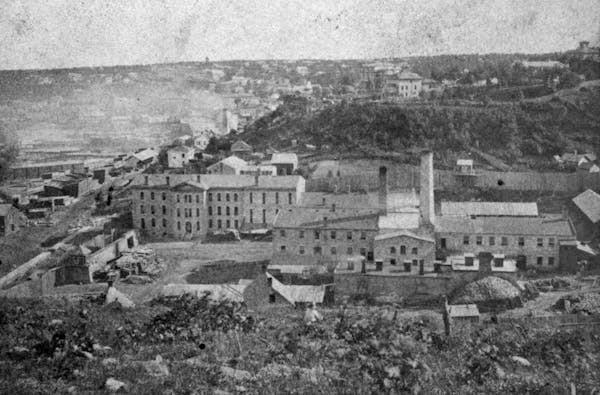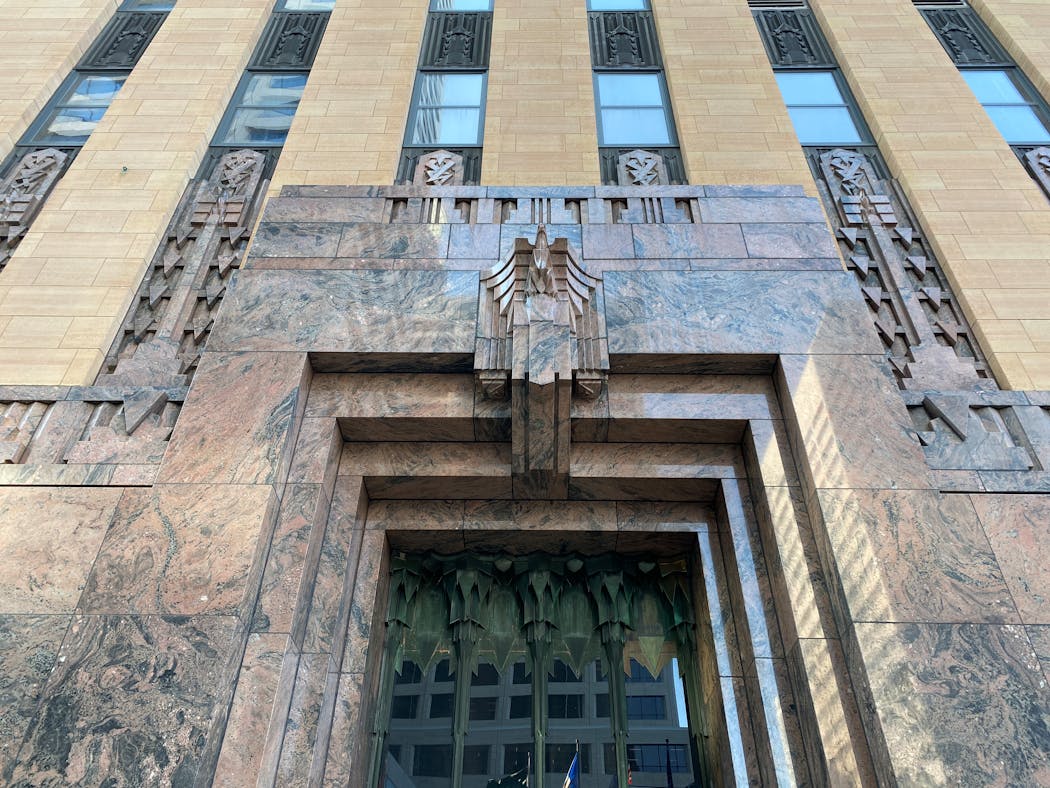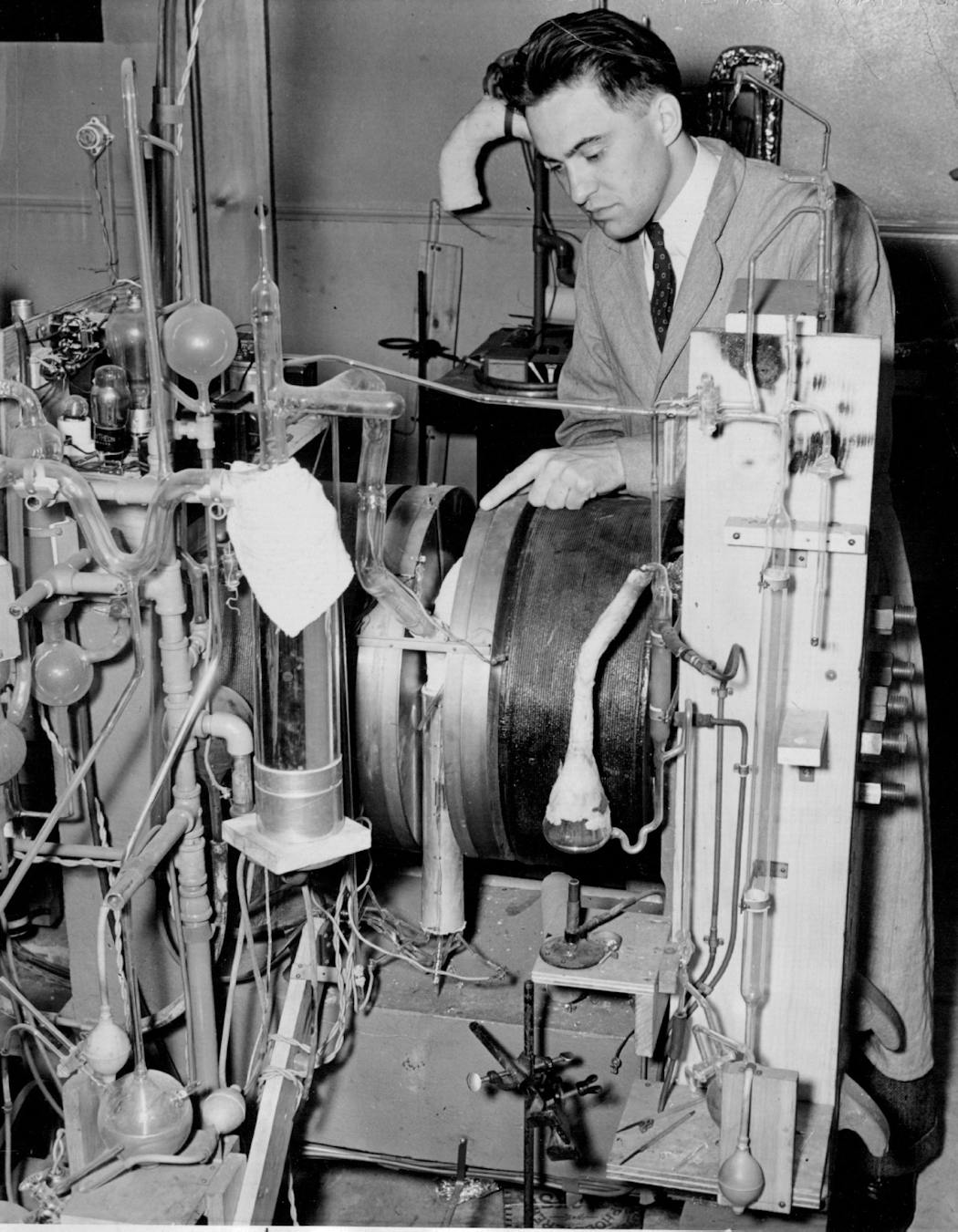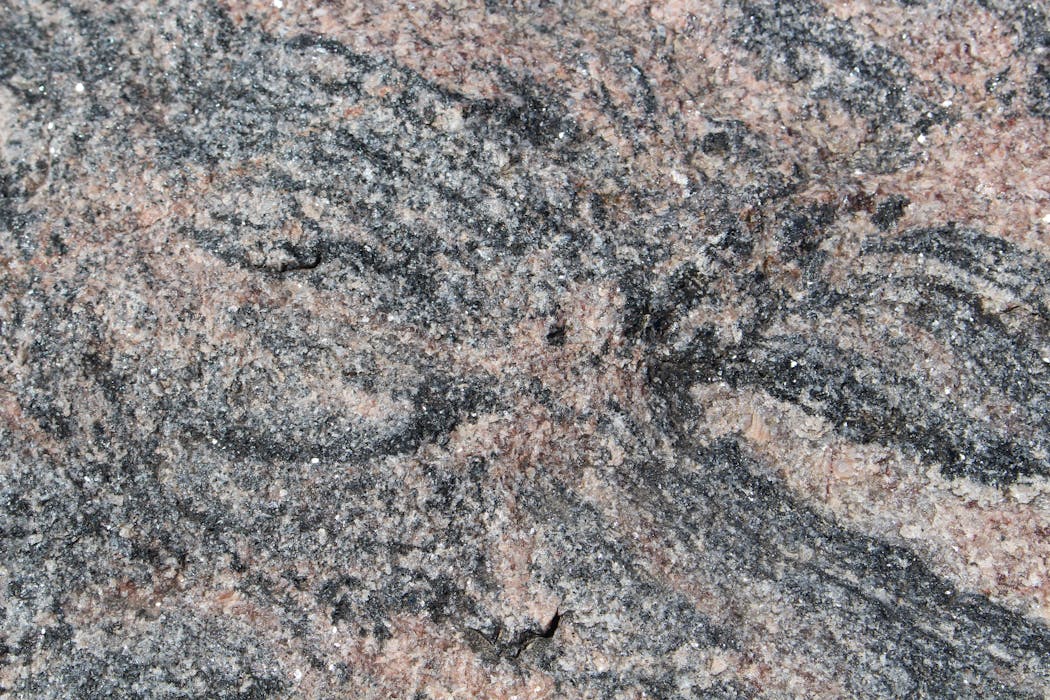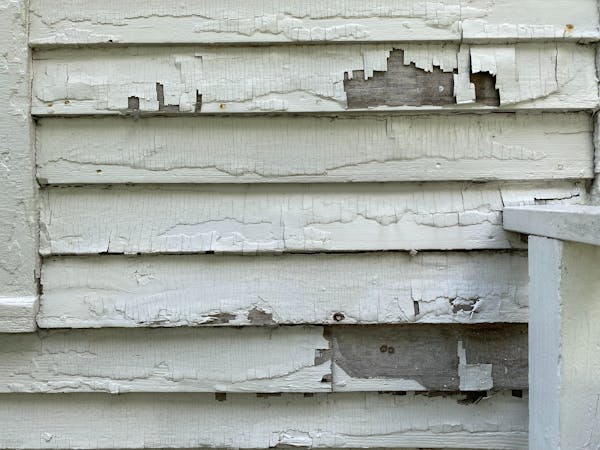Does Minnesota really have the 'World's Oldest Rock'?
Listen and subscribe to our podcast: Via Apple Podcasts | Spotify | Stitcher
Historical markers peppered around Minnesota help keep the state's rich history alive. But few are as intriguing — and controversial — as the landmark for Minnesota's most ancient artifact: the "World's Oldest Rock."
Lynn Keillor stumbled across the metal plaque with this bold geologic claim while visiting the southwestern Minnesota city of Granite Falls several years ago. She wanted to know whether it was true.
"What makes this rock the oldest rock in the world?" Keillor asked Curious Minnesota, the Star Tribune's community reporting project. "And how does anybody determine that?"
The truth is that the world's oldest rock is not located in the parking lot of the Yellow Medicine County Historical Society. But the rock outcroppings of the area briefly held that title in the 1970s because of pioneering research that happened in the state. They are one of just three outcroppings this ancient in the United States and — as the plaque states — "some of the oldest exposed rock in the world."
In fact, the 3.5 billion-year-old rocks of the Minnesota River Valley are internationally known by geologists. The rocks help tell the story of how North America developed and represent rare examples of Earth's early crust, formed so long ago that scientists still aren't sure how the planet even operated at the time.
"Much of the early history of the Earth has disappeared," said David Southwick, former director of the Minnesota Geological Survey. "Here in the Minnesota River Valley is a place where a little bit of that ancient construction of the Earth is still preserved."
It's not hard to find some of Minnesota's ancient rock, since it decorates prominent buildings from the Twin Cities to Singapore. That is because some of the outcroppings, known as Morton gneiss or rainbow granite, feature mesmerizing pink and gray coloring. Fountains outside the White House are made of this rock, which also adorns Chicago's Adler Planetarium and downtown Minneapolis' Lumen Technologies Building (formerly known as the CenturyLink Building).
A unique history
Two defining features of Minnesota, its flatness and central location in North America, help explain why the state boasts such unique geology.
Every continent on Earth has a nucleus, or "craton," around which it formed. These are generally where the oldest rocks in the world are found. Minnesota is on the southern end of North America's core — the Canadian Shield. These regions no longer see significant tectonic activity, which is why Minnesota is a flat place that also boasts notable rocks.
The story begins at an unknown location on the planet 3.5 billion years ago — about a billion years after the Earth was formed. That's when the rocks that now dot the landscape of towns like Morton, Granite Falls and Montevideo were created deep underground. Typically granite rocks are formed from cooling magma, but the precise origin story of the Minnesota River Valley rocks remains murky.
"It's … some of the earliest crust that we know of on the planet," said Keith Brugger, a geology professor at the University of Minnesota, Morris. "This is a fundamental question that we don't have the answer to: How does the earliest continental crust form?"
These rocks essentially comprised bedrock of a small continent until about 2.6 billion years ago, when it slammed into a growing cluster of land masses that ultimately joined with others to form North America. This collision and other earlier tectonic events created immense heat and pressure that partially melted the rocks and allowed new minerals to form — resulting in the swirling markings we see today.
The collision also created mountain ranges in what is now Minnesota, bringing that deep bedrock closer to the surface of Earth. Those mountains eroded long ago, leaving behind only their ancient, rocky roots.
Starting about 70,000 years ago, glaciers buried most of Minnesota's ancient geology under sediment. But the Minnesota River Valley offers a rare glimpse of what's beneath all that debris.
When the glaciers melted, they created a massive lake — Lake Agassiz — extending from Canada into Minnesota. This lake flooded and formed a torrential river known as Glacial River Warren that swept away debris and carved a deep valley across Minnesota. That event exposed the ancient rocks in what is now the Minnesota River Valley — named for the comparatively small river there today.
In Dakota culture, rocks are considered sacred for being one of the most ancient relatives still on Earth, according to Cheyanne St. John, tribal historic preservation officer for the Lower Sioux Indian Community just south of Morton. The Minnesota River Valley outcroppings hold special significance to some tribes as reflections of the constellations in the sky. This concept is known in Dakota culture as Waŋkátaŋhaŋ Khútaŋhaŋ, which means "as above, so below," she said.
Pioneers of rock dating
Geologists have suspected that the Minnesota River Valley rocks were very ancient since early geological surveys of the state in the late 1800s.
Advances in radioactive dating technology — thanks in part to the work of University of Minnesota Prof. Alfred Nier — allowed geologists to zero in on a more exact age of the rocks over the 20th century. That process typically calculates ages by analyzing a predictable breakdown of uranium to lead within the rock.
"The work of Al Nier was very instrumental in getting the whole topic of age dating of rocks underway," Southwick said. "He built and used equipment that was new, novel and enabled the measurements to be undertaken."
By the 1960s, researchers began reporting that the Minnesota River Valley rocks might be 3.5 billion years old.
A leader in that research was Samuel Goldich, a former student at the University of Minnesota who became an expert in rock dating and weathering patterns. In 1974, when geologists around the world met for a conference in Redwood Falls, Goldich proclaimed that the Minnesota River Valley rocks were the oldest in the world based on research showing them to be at least 3.8 billion years old.
"The only older rocks on Earth were brought back from the moon," Goldich told the Minneapolis Star, referring to moon rocks that were 4.5 billion years old. Other research at the time backed up the claim that they were likely the oldest rocks, but this was based on age estimates that are no longer considered accurate. Modern research shows the rocks are about 3.5 billion years old.
A year later, the Yellow Medicine County Historical Society erected the "World's Oldest Rock" plaque in its Granite Falls parking lot — an event that does not appear to have been recorded in the local paper.
It wasn't long before geologists found older rocks elsewhere, however. The 1982 book "Minnesota's Geology," for example, noted that older rocks were discovered in Canada and Greenland.
"What was cool about Minnesota is we were kind of at the forefront of exploring this assembly of the stable craton," said Carrie Jennings, a glacial geologist now with the nonprofit organization Freshwater Society.
But the "World's Oldest Rock" mythology has persisted. The sign is unchanged, and books like "Oddball Minnesota" and "Minnesota Curiosities" highlight Granite Falls' claim as having the world's oldest rock.
As ancient rocks go, Minnesota's are very accessible to the public. Most geologists agree that the oldest rock on Earth is the 4 billion-year-old "Acasta gneiss," located in a remote portion of northwestern Canada. A 2008 study found that rocks on the eastern portion of Hudson Bay — another remote area — are more than 4.2 billion years old, but this claim is not settled science.
"Part of the interest in all of these very old rocks is that they're trying to tell us something about their origin and history, but we don't really understand it yet," Southwick said.
A point of pride
The "oldest rock" sign still attracts regular visitors, whether they are kids interested in rocks, visitors taking pictures or people playing the game Pokémon Go (it's a spot to gather virtual supplies).
The Yellow Medicine County Historical Society is aware that the sign is no longer accurate, said Executive Director Megan Lipetzky. But it hasn't been updated because they want to perform new dating on the rocks — despite the abundance of studies that already exist.
"The president of the board and I have been discussing for the past couple of years ... whether or not we should get it redated," Lipetzky said. "And we think we should, but right now we just don't have the funds to do so."
Granite Falls resident Joe Hauger, who has compiled extensive research on the area's geology, remembers having his picture taken with the sign as a child.
"We would tell our family that we live in the town with the world's oldest rock, not really knowing exactly what that meant, but thinking it was cool and exciting," Hauger said.
After studying aerial maps of other ancient rocks sites, he now explains to people that this is the "oldest rock you can just drive up to on a well-maintained road and touch."
Granite Falls may be named after its rocky heritage, but the tiny nearby town of Morton is covered in its signature "rainbow" stone. Morton gneiss graces the Morton welcome sign, the façade of its main restaurant, the façade of an abandoned school, the Lutheran church and plenty of cemetery tombstones. Even the curbs in Morton are made of gneiss.
A corner of the Renville County Historical Society in Morton is dedicated to the story of the rock. Executive Director Nicole Elzenga even keeps a box of small rocks to give to visiting children, who she says are awestruck by their 3.5 billion-year history.
"People show up to this museum for that story," Elzenga said.
In addition to their accessibility, the rock outcroppings of the Minnesota River Valley are also unique because they are actively quarried.
Some quarries use the rock to make aggregate for railroad ballast and roadway projects. A Morton quarry owned by Coldspring extracts the decorative rock primarily for cemetery monuments, though in the 1980s and '90s it was in high demand as a building material, according to Jason Kron, Coldspring sales director.
"It's very rare to have any stone that is this geologically significant that's actually harvested and extracted and used in any way shape or form," Kron said, adding that the company "isn't even making a dent in the [rock] deposit."
Granite Falls Mayor Dave Smiglewski said the area's rock outcroppings are so ubiquitous that they are a frequent topic at City Council meetings, since most street and utility projects hit the bedrock.
"I think most people understand that it may not be the oldest rock, but instead one of the very oldest rocks in the world," he said. "And that's fine because it's still pretty amazing."
If you'd like to submit a Curious Minnesota question, fill out the form below:
Read more Curious Minnesota stories:
Has Minnesota ever had a major earthquake?
What's the truth behind Minnesota's Kensington Runestone?
Who dug the sandstone caves along St. Paul's riverfront?
When did wild bison disappear from Minnesota?
What did the topography of the Iron Range look like before it was mined?
Why is the BWCA a wilderness and not a national park?
Correction: This story has been updated to reflect that there are three outcroppings this ancient in the United States.
